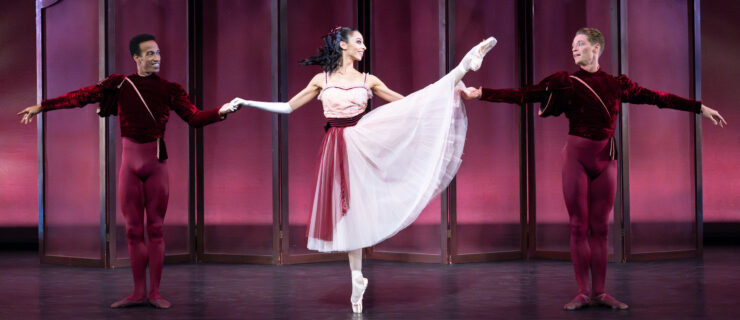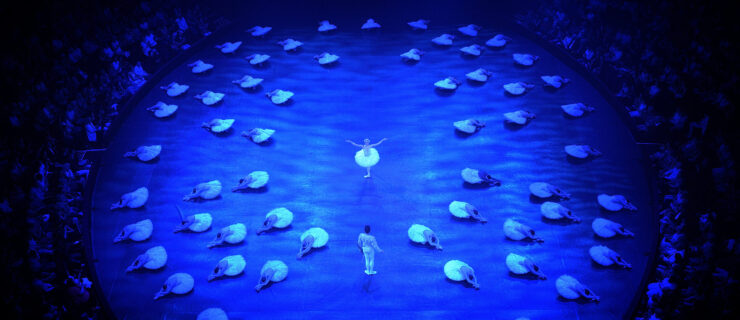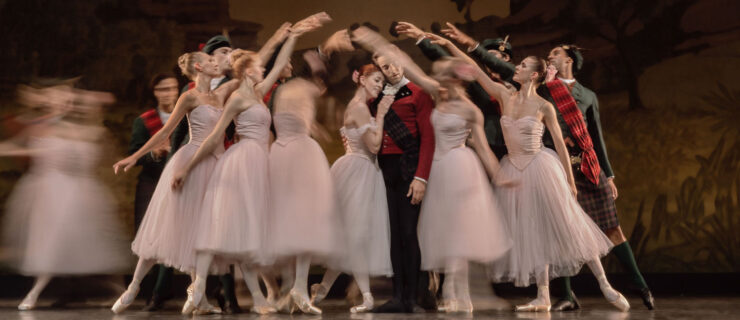Your Training: The Must-Haves
New York City Ballet performs The Sleeping Beauty. The Kirov dedicates an evening to Balanchine and Robbins. The Royal Ballet keeps Wayne McGregor on contract as resident choreographer. In today’s globally integrated dance world, it’s no longer enough to find one style that suits you and stick with it. Ballet companies are trying to keep the attention of an audience that’s always looking for the next new thing—which means that 21st-century dancers are asked to do it all. “To be in a classical company you also have to be a contemporary dancer,” says Ashley Wheater, artistic director of The Joffrey Ballet.
But training yourself to shift from Swan Lake to Agon to In the Upper Room can be daunting—so what do you really need to know? An open mind is your greatest ally. “If your whole way of thinking and relating to the art form is to only do a certain kind of repertoire, it’s not going to go well for you,” says Oregon Ballet Theatre artistic director Christopher Stowell. Familiarizing yourself with a few essential styles will take you a long way.
A Classical Core
The diversity of today’s rep doesn’t change the fact that you’re a ballet dancer; you need a strong foundation in classical technique. But whether you follow the Vaganova, Cecchetti or the Royal Academy of Dance syllabus doesn’t matter as much as you might think. What’s important is having a clean, adaptable movement style. You’re training to join a company, and a neutral base without affectations will give you the most professional options. The majority of today’s top academies create versatile dancers by teaching a hybrid of methods so dancers can easily pick up and switch between styles.
Balanchine
Although Balanchine is technically considered a classical technique, the classes train you to perform his neoclassical ballets, which are known for their elongated lines and exaggerated movements. Balanchine-trained dancers are celebrated for their speed and precision, as well as the ability to shift their weight quickly and cover space. Practicing his technique while you’re in school helps train your body to move faster, sharper, larger.
“If a student hasn’t been exposed to Balanchine work by the time they’re intermediate or advanced, they’re really missing a critical element,” says Margaret Tracey, director of the Boston Ballet School. “I don’t know of any major company that isn’t doing his work.” While Tracey isn’t advocating that every dancer join the School of American Ballet, she feels all students should at least be acquainted with what she calls his “academically accessible variations,” such as those in Divertimento No. 15 and his version of Raymonda.
His neoclassical style also prepares you for contemporary work. After years dancing Balanchine ballets in New York City Ballet, Tracey found that learning Forsythe’s movement came naturally. “A lot of his choreography is about taking something and augmenting it, and that’s really what Balanchine did with the classical technique,” she says. “He stretched it and made it more interesting and gave it depth, and then Forsythe took it a step further.”
Graham & Cunningham
A classical dancer’s first steps into the world of modern dance can feel bewildering. But since Graham and Cunningham both created codified modern techniques with linear positions and structures that are similar to ballet, their classes provide less intimidating entry points. “There is a method, a syllabus and a curriculum that make sense to a person who has been trained in ballet, which has a method, a syllabus and a curriculum,” Stowell says.
Learning to work in parallel strengthens underused muscles and helps prevent injury. Graham’s focus on targeted inhales and exhales also helps classically-trained dancers incorporate breathing into their movement. Both choreographers’ use of contraction and off-balance tilts can strengthen your core in ways that ballet won’t. François Perron, who recently opened the French Academie of Ballet in New York City, where he trains dancers in the French style, hopes his students will learn from his mistakes. “For me personally as a dancer, it took me such a long time to really feel my core,” he says. “I didn’t want to take modern and in class I was not open-minded. I regret it.”
Gaga
As a young dancer entering the professional world, you need to have a sense of perspective about your art form and where it’s going. Gaga, a movement language developed by Ohad Naharin, artistic director of Israel’s Batsheva Dance Company, has taken the dance world by storm. The technique pushes the boundaries of movement, and establishes an organic flow throughout the entire body. “Choreographers are very interested in dancers being open, improvisational and experimental,” says Stowell. Gaga develops these qualities by providing movement instruction with verbal cues and imagery rather than having dancers mimic a prepared set of steps. The philosophy can also be cathartic for ballet dancers—there are no mirrors, and no right or wrong, just movement.
Upon first seeing a Gaga class while teaching at Juilliard, Perron immediately recognized the potential benefits for ballet dancers. “It makes dancers aware that they can’t really move if they do only ballet,” he says. Recently he offered a Gaga class at the French Academie of Ballet. “It’s very hard for the ballet dancer to assimilate to, but even after an hour of class you can see them let go. In a way it’s an extreme control, but a completely different control than in ballet.” Perron also found that the dancers looked forward to the next class—not always an easy feat with a room full of bunheads.
There’s no way to create an exhaustive list of everything you should know before entering a professional ballet company. The best thing you can do is to seek out movement that feels foreign while maintaining your roots in classical technique. “You’re the brush, you’re the paint,” says Wheater, “and you need to be very open-minded to be the greatest artist that you can be.”
Earn College Credit Onstage
Dancers are often afraid that choosing college means giving up on a performing career. But London’s Central School of Ballet lets dancers earn a bachelor’s degree by performing. During the third and final year of its undergraduate program (which is open to Americans), students form a touring troupe called Ballet Central, and perform about 25 shows in 20 theaters around the UK. In the last few years, Matthew Bourne, Ashley Page, Helgi Tomasson and Richard Alston have all set pieces on the troupe.
Students earn a BA in professional dance and performance, validated by the affiliated University of Kent. Ballet Central artistic director William Glassman says that approximately 70 percent of alumni find professional dance jobs within a year of graduating. Members of last year’s class now perform with Ballet Boyz, Matthew Bourne, Scottish Ballet and Estonian National Ballet, among other companies.
Ninety percent of the program is held in the studio or onstage. “The course is designed to develop inquisitive performing artists,” says Glassman. Even before students’ last year, the school aims to improve their artistry by having them perform as often as possible. In addition to school concerts, students dance in outside events around London, such as the Critics’ Circle Awards. They also perform as extra dancers or supernumeraries for companies ranging from the English National Ballet to the Bolshoi and Kirov Ballets. See centralschoolofballet.co.uk for more information and audition dates.
Job Fair In Orlando
Wish you could skip the traditional audition tour and just have several directors watch you take a class? Check out the World Ballet Competition of Orlando. The annual event hosts a job fair—open to both competing and non-competing dancers—where hopefuls can take an onstage audition class in front of artistic staff members from several companies. Representatives from Pittsburgh Ballet Theatre, Ballet West, The Washington Ballet, Tulsa Ballet, Oregon Ballet Theatre, Orlando Ballet and BJM Danse Montréal have participated in past years. The class is also recorded and streamed online to additional directors who are unable to attend in person.
This year’s job fair will take place on June 2 at the Bob Carr Performing Arts Center. About 25 to 35 dancers will be chosen to participate via a preliminary DVD audition. The fee is $30. Applications are due by April 23. For more information, see wbcorlando.com.






